Ice Chaser
Our mission as described to the National Science Foundation in the application for the grant to Artists and Writers was to take molds off the ice textures to bring home to the studio to recreate as glass sculpture.
The first thing we needed to do in our quest was to get some ice. Out in the Zodiac on boating 1 and 2, we took pictures. Later Tracy, the lab supervisor, issued us fish nets so we could fish out pieces from the shore. Yesterday Art and I took out a Zodiac so we could survey the ice ourselves . I grabbed a few chunks and we have started molding them to test our system. Right off the dock in the first few minutes of being here, I made significant observations. For one, the layers of snow and ice compacted make for a lively internal structure, one of the most significant aspects of my regular studio work. I have seen how the interior layering can be enhanced by the water-shaped textures of the floating ice.
Right off the dock in the first few minutes of being here, I made significant observations. For one, the layers of snow and ice compacted make for a lively internal structure, one of the most significant aspects of my regular studio work. I have seen how the interior layering can be enhanced by the water-shaped textures of the floating ice.
The first thing we needed to do in our quest was to get some ice. Out in the Zodiac on boating 1 and 2, we took pictures. Later Tracy, the lab supervisor, issued us fish nets so we could fish out pieces from the shore. Yesterday Art and I took out a Zodiac so we could survey the ice ourselves . I grabbed a few chunks and we have started molding them to test our system.
 Right off the dock in the first few minutes of being here, I made significant observations. For one, the layers of snow and ice compacted make for a lively internal structure, one of the most significant aspects of my regular studio work. I have seen how the interior layering can be enhanced by the water-shaped textures of the floating ice.
Right off the dock in the first few minutes of being here, I made significant observations. For one, the layers of snow and ice compacted make for a lively internal structure, one of the most significant aspects of my regular studio work. I have seen how the interior layering can be enhanced by the water-shaped textures of the floating ice. Just one little piece of throw-away brash ice and so much to look at. notice the layers of bubbles complemented by the "battuto" texture on the surface. battuto is an Italian technique of grinding facets into the side of glass to get away from the shiny round surface of blown work, or to camouflage the surface of castings. Here it has its natural correspondence in nature.
Just one little piece of throw-away brash ice and so much to look at. notice the layers of bubbles complemented by the "battuto" texture on the surface. battuto is an Italian technique of grinding facets into the side of glass to get away from the shiny round surface of blown work, or to camouflage the surface of castings. Here it has its natural correspondence in nature.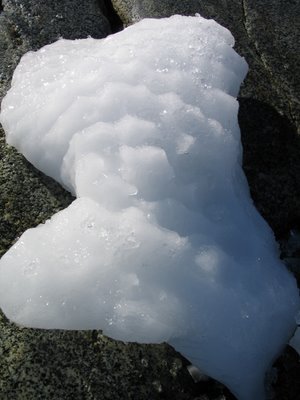 This knobby texture is a good one.
This knobby texture is a good one.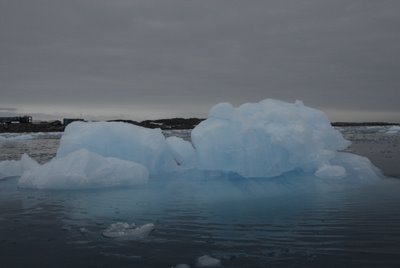 This ice just keeps on coming. The blue is quite mysterious. It is not present in smaller pieces suggesting that it is very weak in blueness. The water here has a blue-green cast, but this turquoise is not the same as that.
This ice just keeps on coming. The blue is quite mysterious. It is not present in smaller pieces suggesting that it is very weak in blueness. The water here has a blue-green cast, but this turquoise is not the same as that.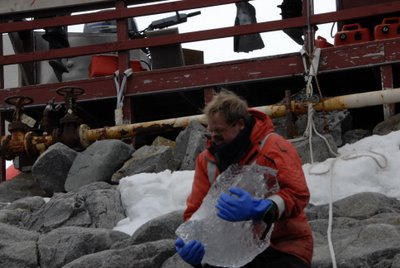 Got one! Good thing this isn't glass, I'd really be struggling. There is no dock at Palmer for the Zodiacs. I had to carry this piece of ice across the wet rocks to our nearby refrigerator container. Glass weighs about twice as much as ice.
Got one! Good thing this isn't glass, I'd really be struggling. There is no dock at Palmer for the Zodiacs. I had to carry this piece of ice across the wet rocks to our nearby refrigerator container. Glass weighs about twice as much as ice.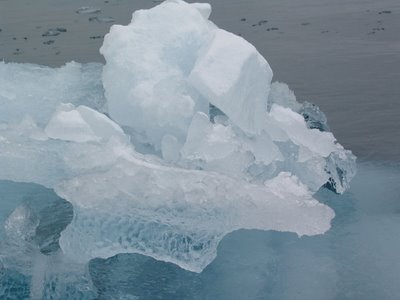 On the other hand, I wish I could put these in the gallery!
On the other hand, I wish I could put these in the gallery! Here is our first attempt at molding with the Polytek Tin-Sil, which failed because I forgot the catalyst!
Here is our first attempt at molding with the Polytek Tin-Sil, which failed because I forgot the catalyst! Zee and Art in our studio. I think I'll call it "1135 south", since it's just as far away from our lab as my second studio is at home. The container is refrigerated to -3.5ºC (25ºF). It has proven perfect to keep our ice samples from either melting or getting covered with condensate and changing after we pull them out of the water.
Zee and Art in our studio. I think I'll call it "1135 south", since it's just as far away from our lab as my second studio is at home. The container is refrigerated to -3.5ºC (25ºF). It has proven perfect to keep our ice samples from either melting or getting covered with condensate and changing after we pull them out of the water.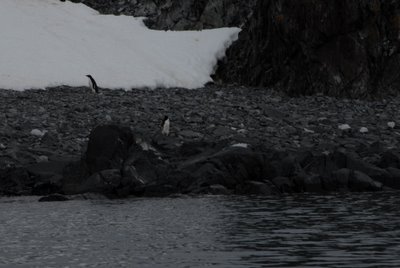 However 1135 North was never like this. Right across Arthur Harbor is Torgensen Island. There are 4000 breeding pairs of Adelie penguins. They come over and visit and we see them on the rocks or bergs. When we had the boat out, we cruised close enough to see their colony.
However 1135 North was never like this. Right across Arthur Harbor is Torgensen Island. There are 4000 breeding pairs of Adelie penguins. They come over and visit and we see them on the rocks or bergs. When we had the boat out, we cruised close enough to see their colony.
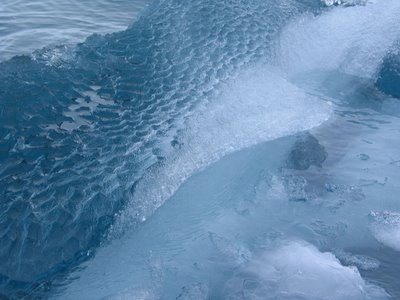
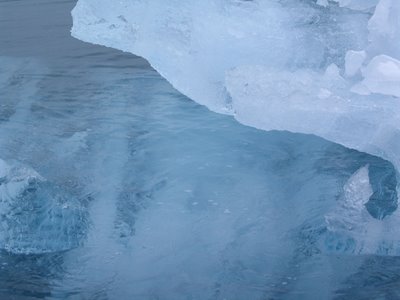


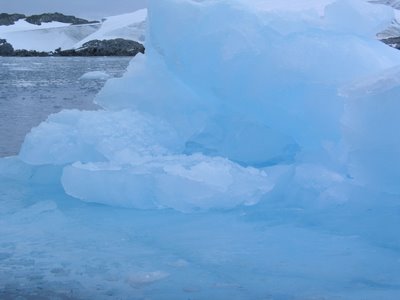
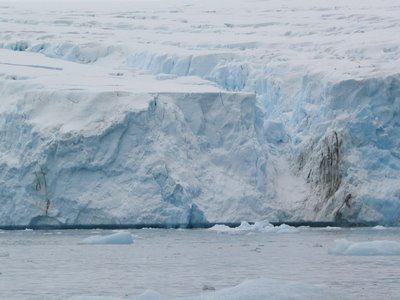
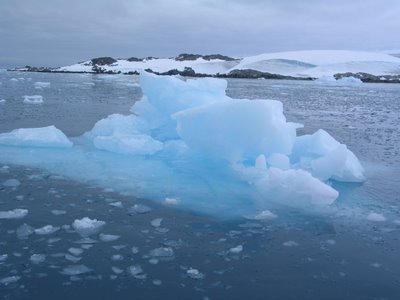
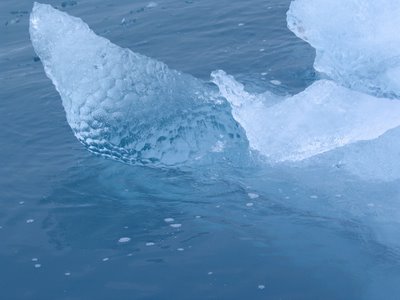
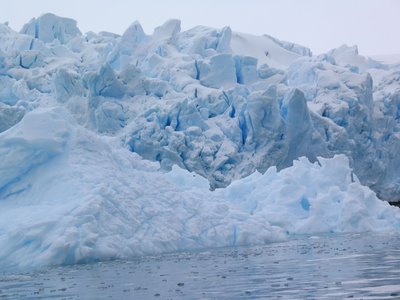

5 Comments:
Beautiful photos and what a spectacular thing to sculpt. I am going to share your blog with other artists!
Promise to read the whole post, but at this very moment, I'm possitively impressed by those beautiful ice forms! It must be really exciting to be part of this experience.
How inspiring! The blues, the shapes and forms. Wow.
what a different world it is out there! thanks for sharing.
I must have missed your explanation. Once you have taken a mold of the ice formation, what do you intend to do with the mold? Cast in glass? Plastic? Plaster?
Just curious...
Post a Comment
<< Home